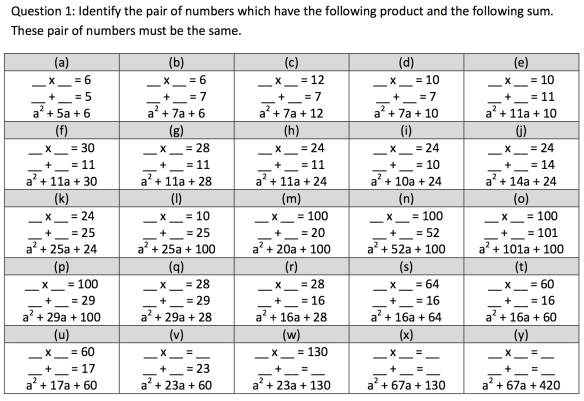I’ve never really carefully read the retrieval practice literature, but I think it gets confusing when people talk about retrieval practice when talking about math skills, as opposed to mathematical facts.
Here is the description from @poojaagarwal‘s website, committed to promoting retrieval practice among practitioners:
Retrieval practice is a strategy in which calling information to mind subsequently enhances and boosts learning. Deliberately recalling information forces us to pull our knowledge “out” and examine what we know. For instance, I might have thought that I knew who the fourth U.S. President was, but I can’t be sure unless I try to come up with the answer myself (it was James Madison).
But how does this apply to math skills? Can trying a problem (i.e. practicing the skill) ever count as retrieval practice? Does it make sense to use the metaphor of ‘calling information to mind’ to describe what’s going with skills practice?
I think not. But I also am finding retrieval practice useful in my lesson planning. There is a great deal of knowledge that is useful for students to know when they’re learning something new. This sort of knowledge is the sort of thing that I’d like my students to know (i.e. retrieve from memory), more than I’d like them to derive.
Often, at the beginning of class, the first thing I ask my students to do is to remember some facts that they may (or may not yet) know from memory. Some constraints:
- I don’t ask students to solve a problem and call it retrieval practice — that’s skills practice, not retrieval practice, and tickles other parts of the mind.
- I only ask students questions that I think they could remember, even if it might be difficult to recall these things. Ideally, these would be things that either students could derive if they can’t recall them.
- Because stuff from the last few days of class can often get forgotten really quickly, I often use these prompts to strengthen the memory of what we’ve recently done. (The prompt “Summarize what we did yesterday” is surprisingly difficult!)
Here are some prompts I’ve recently used with students:
“Draw a pair of ramps that are pretty close to being of equal steepness.”
“Write an equation of a quadratic, describe what it would look like.”
“What happens when you use the tan button on the calculator? Give some examples.”
“Write several pairs of decimals, and write the number that is between them.”
The truest ‘retrieval practice’ of these is the one about the tan button. Next in line is the one about the equation of the quadratic, since I’m prompting kids to remember what the features of the graph are (though it’s also skills practice). What made me think about these as retrieval practice is that they were all calling back on the previous day’s class.
Here are some purer examples of retrieval practice prompts in math:
“What’s the Pythagorean Theorem?”
(If a specific procedure is supposed to be known for converting a decimal into a fraction:) “How do you convert a decimal into a fraction?”
etc.
As I’m messing around in graph theory, I’m noticing that there are a lot of things that would be useful to remember — particular proofs that could serve as paradigms, constraints (in the form of inequalities) on possible planar or non-planar graphs, theorems, specific graphs that are useful examples, etc. If I had a teacher of graph theory, I’d want that teacher to prompt me to remember these things so that I could have more of them available as resources when I’m trying to learn something new or do some creative proving or problem solving.
(I should probably bust out some flash cards at some point…)
As an aside, I think that retrieval practice is sometimes mixed up with spaced practice, but I think these are different things. Spaced practice might be a better fit for what people are describing when they talk about intentionally building time-separated practice of skills into their courses and assignments. I think this requires a different sort of finesse than retrieval practice, though, as the problem with spaced practice is making sure students have something productive to do if they’ve actually forgotten the material.


